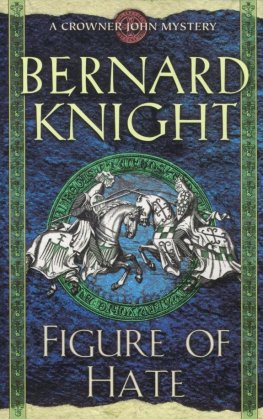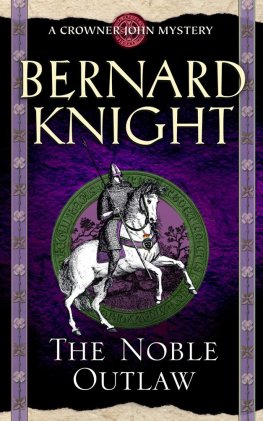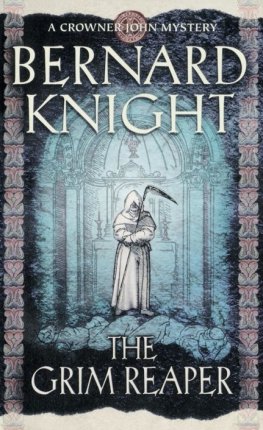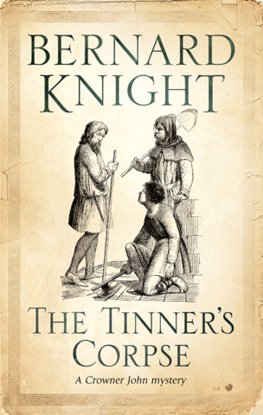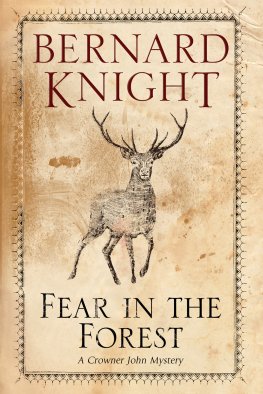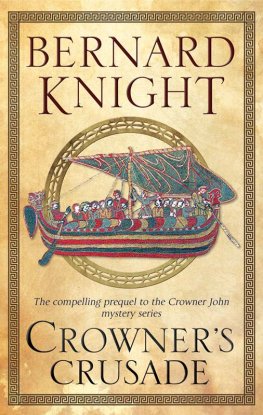Bernard Knight - Figure of Hate
Here you can read online Bernard Knight - Figure of Hate full text of the book (entire story) in english for free. Download pdf and epub, get meaning, cover and reviews about this ebook. year: 2005, publisher: Simon and Schuster, genre: Detective and thriller. Description of the work, (preface) as well as reviews are available. Best literature library LitArk.com created for fans of good reading and offers a wide selection of genres:
Romance novel
Science fiction
Adventure
Detective
Science
History
Home and family
Prose
Art
Politics
Computer
Non-fiction
Religion
Business
Children
Humor
Choose a favorite category and find really read worthwhile books. Enjoy immersion in the world of imagination, feel the emotions of the characters or learn something new for yourself, make an fascinating discovery.
- Book:Figure of Hate
- Author:
- Publisher:Simon and Schuster
- Genre:
- Year:2005
- ISBN:9780743492140
- Rating:5 / 5
- Favourites:Add to favourites
- Your mark:
- 100
- 1
- 2
- 3
- 4
- 5
Figure of Hate: summary, description and annotation
We offer to read an annotation, description, summary or preface (depends on what the author of the book "Figure of Hate" wrote himself). If you haven't found the necessary information about the book — write in the comments, we will try to find it.
Figure of Hate — read online for free the complete book (whole text) full work
Below is the text of the book, divided by pages. System saving the place of the last page read, allows you to conveniently read the book "Figure of Hate" online for free, without having to search again every time where you left off. Put a bookmark, and you can go to the page where you finished reading at any time.
Font size:
Interval:
Bookmark:
Bernard Knight
Figure of Hate
PROLOGUE
Spring 1195
The tournament was in its second day when tragedy first struck.
It was not that such accidents were all that uncommon. The war-games that were so beloved of knights were intentionally dangerous affairs if it had been otherwise, they would soon have lost I their appeal. The previous day, a blustery Monday in early April, a Warwickshire baron had been unhorsed and had fractured his thigh. With the broken bone protruding through the skin, everyone knew that he as sure to die once it became purulent. Another combatant was in his tent, anxiously tended by his squire as he vomited dark blood, after a blunted lance had caught him in the stomach. Otherwise the day had been fairly benign, apart from the numerous bruises and gashes that were too common to be noticed by the jousting fraternity.
It was the next day of this three-day mle that claimed the first life.
Sir William Peverel, manor-lord of Sampford Peverel in east Devon, was one of the hundred and twenty knights taking part in this escapade and he was the first to perish. Some would say that at fifty-five, older than most of the participants, he should have been wise enough to stay at home, rather than rampaging about the countryside like someone thirty years his junior. But William had been competing in tournaments for most of his adult life and owed some of his fortune to the spoils he had won in this dangerous pastime. He saw no reason to give up now, having a wealth of experience to add to his still-brawny arms and his excellent eyesight.
Soon after dawn that morning, the two armies had assembled on the tournament ground between Salisbury and Wilton. It was a stretch of undulating countryside two miles long and half a mile wide, mostly open common with some thickets and copses of trees scattered within it. This Wiltshire site was one of the five that had been officially sanctioned by King Richard as the only places in England where tournaments were allowed though this rule was flouted more often than it was observed. The Lionheart, however, with his usual dedication to collecting money to finance his endless French wars, charged a stiff fee for participation, ranging from twenty marks for an earl to two for a landless knight. The common folk were strictly excluded, as tourneying was only for the aristocracy and the mounted soldier though the peasants turned up to watch and to wager on the winners.
On this Tuesday, William Peverel was part of the Red team in fact, he was one of the leaders, if such a term could be applied to a disorderly mob for whom team spirit came a poor second to personal gain. His sixty combatants massed their great warhorses at the top of a gentle rise, each wearing something scarlet to distinguish them from the Blues, who were waiting on the next hillock a quarter of a mile away. Some wore a red tabard or a surcoat over their armour, others just a crimson scarf or a length of red cloth tied around their shoulders. Though these distinguishing markers were many and varied, they all wore similar armour consisting of chain-link hauberks. Some were ankle length and others only came to the knee and a few had mailed leggings. Only a handful of the poorest knights wore cuirasses of thick boiled leather instead of mail, but everyone had a round iron helmet with a prominent nose-guard, and most protected their necks with a hood of steel links and an aventail that could be pulled up over the chin. Everyone had a long blunted lance, a broadsword and an oval or heart-shaped shield, many of these having a crude heraldic device painted on the toughened wood. The two groups readied themselves, the men now silent, though some of the destriers snorted, tossed their heads or pawed the damp ground, excited at the prospect of a gallop and the clash of arms.
Away to Peverel's left, midway between the armies, was a small group of mounted men, wearing chain mail but carrying no lances or swords. These were the marshals and the judges, all prominently wearing white surcoats over their hauberks and some holding tall staffs from which fluttered white flags.
Behind them was the recet, a half-acre marked off by posts and ropes, in which were a few tents and troughs of water. This was the 'safe area' to which injured or exhausted men and horses could retreat for respite from the battle and to which the badly wounded and dead could be brought to be tended by their squires, scores of whom now stood there waiting anxiously, wondering whether the end of the day would see them sharing their master's good fortune or his destitution.
All eyes were on the marshals, who would give the signal for the mle to begin it might well last for up to ten hours that day.
In the tense silence, a man coughed and a stallion neighed.
Then they saw the white flags wave as a warning to be ready. A moment later, a trumpet shrilled a discordant blast and the umpires retreated nearer the recet, to avoid being trampled by the combatants. The previous quiet was suddenly shattered by roars and screams as the teams spurred their ponderous horses into action. The two massed groups gradually accelerated towards each other, aided by the slight slope down into the small plain between the two hillocks. The Reds and the Blues chanted their rehearsed war-cries, partly to work themselves up into an aggressive hysteria, but also to intimidate their opponents. The thunder of over a hundred huge steeds, each weighing almost half a ton, shook the ground, and when the front ranks smashed into each other, it was as if giant cymbals had been clashed.
William Peverel was in the centre of the front rank, and as he approached the Blues he picked out his first opponent, a tall, erect man on a black horse who came at him with similar intent. Lowering his lance, Peverel tucked the butt into his waist and aimed for the rivets in the centre of the man's shield, where the handle was attached. In the split second before impact, he saw that the shield had three white birds painted on a green background. With an ear-splitting crash, they made contact simultaneously, and the lance of each man hit the opposing shield with the momentum of a ton of horseflesh travelling at a combined speed of thirty miles an hour. The butt of his own lance slammed into his side with a force that made William grunt, and his lower back was whacked painfully against the high cantle of his chair-like saddle.
His shield jerked on his left arm, but he had angled it away so that the other knight's lance slid off, losing much of its impact. With his feet jammed in the stirrups and his knees locked against the front of his saddle, he had no difficulty in staying on his destrier's broad back.
William's own strike had been dead centre on the white bird, and the owner of the shield took the full of the twelve-foot lance, jerking back and almost falling from his horse. But like Peverel he was a seasoned fighter and managed to keep his balance. A fraction of a second later they had passed each other, and though the mle had widened out, there were other horsemen all around. Before he could draw breath, another knight charged at him, and though William managed to nick the edge of the other's unemblazoned shield he was more concerned with turning away the poorly aimed blow of the fresh-faced young man. Another few seconds and he found himself through the ranks of the Blues. It took a good many yards to slow the big horse and haul it around again to face the fighting, and as he did so another Red fighter cantered up to him. It was his second son, Hugo Peverel, his ruddy face sweating from excitement and exertion.
We're too evenly matched today, Father,' he yelled, as he turned alongside. 'We need a couple who are still wet behind their ears to get us warmed up!'
As they started to wheel their horses back into the crush, William shouted back. 'I've just had one boy trying to poke me, but I didn't have time to settle with him. He didn't look worth much of a ransom, anyway.' Another Blue knight cut short their conversation by attacking Sir William from the right, just as another man on a white mare came at his son from the other side, For five minutes there was a confused thrashing of men and horses, without much result as far as the Peverels were concerned, as neither managed to unseat my of their opponents.
Font size:
Interval:
Bookmark:
Similar books «Figure of Hate»
Look at similar books to Figure of Hate. We have selected literature similar in name and meaning in the hope of providing readers with more options to find new, interesting, not yet read works.
Discussion, reviews of the book Figure of Hate and just readers' own opinions. Leave your comments, write what you think about the work, its meaning or the main characters. Specify what exactly you liked and what you didn't like, and why you think so.

